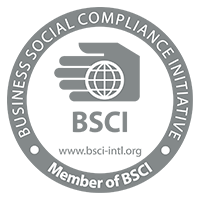
Industrial safety in the readymade garment sector is a major concern in developing countries. The sector is characterized by a large number of workers, often working in hazardous conditions. In recent years, there have been a number of high-profile accidents in the sector, resulting in the deaths of hundreds of workers.
There are a number of factors that contribute to the poor industrial safety record in the readymade garment sector.
Let's discuss the perspective of industrial safety in the readymade garment sector from a developing country standpoint.
- Regulatory Framework: Developing countries need to establish and enforce robust regulatory frameworks to govern industrial safety in the readymade garment sector. These frameworks should include clear guidelines and standards related to workplace safety, fire safety, building codes, machinery safety, and occupational health. Governments should also establish competent regulatory bodies and inspection mechanisms to monitor compliance with these regulations.
- Building and Structural Safety: One of the critical aspects of industrial safety in the readymade garment sector is ensuring the structural integrity of factories and buildings. Many tragic incidents, such as factory fires and building collapses, have occurred in developing countries due to inadequate infrastructure and poor maintenance. Governments should enforce building codes, conduct regular inspections, and provide technical assistance to ensure that factories meet safety standards.
- Fire Safety: Fire safety is of paramount importance in the readymade garment sector, as factories often involve the use of flammable materials and processes. Adequate fire prevention and protection measures, such as fire alarms, fire exits, fire extinguishers, and sprinkler systems, should be in place. Regular fire drills, employee training programs, and the establishment of emergency response teams can also help mitigate fire risks.
- Machinery Safety: Readymade garment factories employ various types of machinery, including cutting machines, sewing machines, and pressing machines. Ensuring the safety of workers operating these machines is vital. Employers should provide proper training on machinery operation, implement safety guards and emergency stop systems, and maintain equipment regularly to prevent accidents and injuries.
- Occupational Health and Safety: Developing countries should prioritize occupational health and safety measures in the readymade garment sector. This includes providing a safe and healthy working environment, proper ventilation, adequate lighting, and personal protective equipment (PPE) such as gloves, masks, and safety goggles. Regular health check-ups and medical facilities should also be accessible to workers.
- Worker Empowerment and Training: Educating and empowering workers about industrial safety is crucial. Employers should conduct regular safety training programs to raise awareness about potential hazards, safe work practices, and emergency procedures. Workers should be encouraged to report safety concerns without fear of reprisal, and whistleblower protection mechanisms should be in place.
- Social Responsibility and Collaboration: Brands and buyers have a responsibility to ensure that the garments they source are produced in safe working conditions. They should promote ethical sourcing practices and collaborate with suppliers to improve safety standards. Collaboration among governments, industry associations, trade unions, and civil society organizations is also vital to address safety issues collectively.
- Transparency and Monitoring: Developing countries should promote transparency and accountability in the readymade garment sector. Regular inspections, audits, and independent monitoring can help identify safety gaps and ensure compliance with regulations. Publicly available safety ratings and certifications can also incentivize factories to improve their safety practices.
- Continuous Improvement: Safety measures in the readymade garment sector should be seen as an ongoing process of continuous improvement. Regular reviews, evaluation of safety practices, and learning from past incidents can drive progress and prevent future accidents.
Here are some additional things that can be done to improve industrial safety in the readymade garment sector:
- Improve communication between workers and management. Workers need to feel comfortable reporting safety concerns to management. Management needs to be responsive to these concerns and take steps to address them.
- Provide workers with access to personal protective equipment (PPE). PPE can help to protect workers from injury in the event of an accident.
- Create a culture of safety in the workplace. This can be done by emphasizing the importance of safety in training, by providing regular safety inspections, and by rewarding workers who follow safety procedures.
By adopting a comprehensive and holistic approach to industrial safety in the readymade garment sector, it is possible to make the readymade garment sector a safer place to work.
Leave a Reply
Your email address will not be published.






















Comments
0 Comment